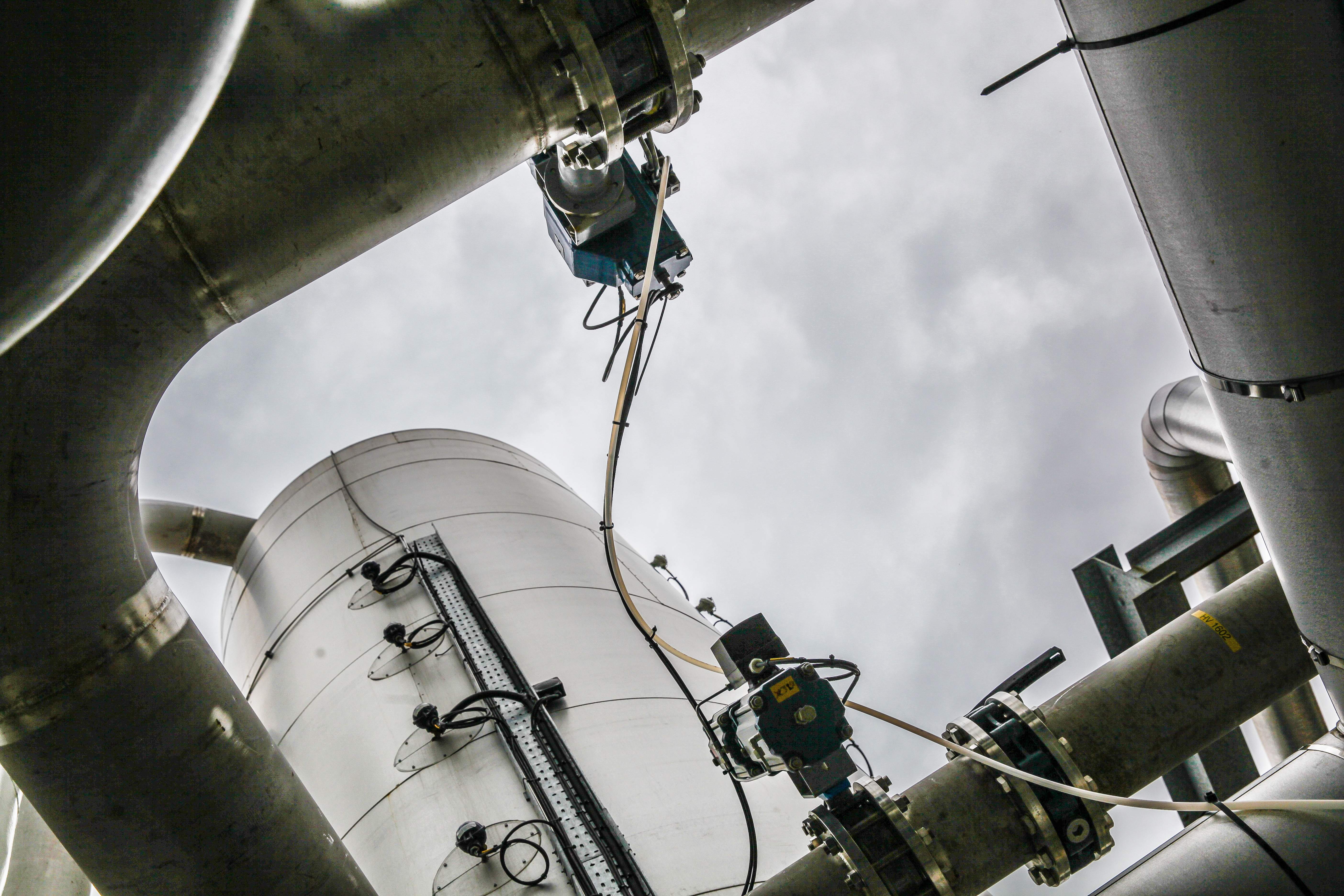The world's first liquid air energy storage (LAES) plant has opened in Bury, Greater Manchester, in a boost to hopes of a low-carbon future

Highview Power's Pilsworth demonstrator, a liquid air energy storage (LAES) plant in Bury, Greater Manchester
In a world first, air will be turned into liquid to store energy captured by wind and solar power as part of a new project in north-west England.
The 7,400 sq ft grid-scale liquid air energy storage (LAES) plant was launched today (5 June) in Bury, Greater Manchester.
London-based renewable energy firms Highview Power and Viridor created the plant after receiving £8m in Government funding and £25m in private investments.
Professor John Loughhead, chief scientific advisor at the Department for Business, Energy and Industrial Strategy, said: “We welcome the accomplishment of Highview Power, working together with their project site partner Viridor, to successfully build and operate this grid-scale liquid air energy storage technology demonstration plant.
“The deployment of smart, flexible technologies, such as energy storage, will help to ensure the UK has a secure, affordable and clean energy system now and in the future in keeping with the priorities within UK Government’s Modern Industrial Strategy.
“We’re pleased to have been able to support the Pilsworth, Bury, demonstrator through our Energy Innovation Programme aimed at accelerating the commercialisation of innovative clean energy technologies and processes.”
Turning air into liquid sounds like a very complex process – but here’s how it works.
A cycle that could power 200,000 homes all day
The LAES plant, which produces energy at a rate of 5 megawatts (MW) and 15 megawatt-hours (MWh), will help electricity grids cope with a growing number of wind and solar power.
It works by turning air into liquid to enable easy energy storage.
The process requires the air to be cooled down to -196°C using excess or off-peak electricity, transforming it into a liquid state that can be stored in insulated, low pressure vessels.
By heating the liquid, it leads to re-gasification and a 700-fold expansion in volume, which then powers turbines to generate power.
Once produced, the energy can power up to 200,000 homes for an entire day and 5,000 home for up to three hours.
It will deliver energy from 10MW/40MWh to more than 200MW/1.2GWh.

Energy storage could lead the way to a low-carbon world
Gareth Brett, CEO at Highview Power, said: “The plant is the only large-scale, true long-duration, locatable energy storage technology available today, at acceptable cost.
“The adoption of LAES technology is now underway, and discussions are progressing with utilities around the world who see the opportunity for LAES to support the transition to a low-carbon world.
“After the launch, demand response aggregator KiWi Power will be able to draw energy from the LAES plant to power about 5,000 average-sized homes for around three hours.
“The plant will demonstrate how LAES can provide a number of reserve, grid balancing and regulation services,” he said.
“Yet the opportunity is far greater – LAES technology can scale to hundreds of megawatts in line with the energy demand of urban areas the size of small towns up to large cities.
“This means LAES plants could easily store enough clean electricity generated by a local wind farm to power a town like Bury – which has about 100,000 homes – for many days, not just a few hours.”
Expanding energy storage technology globally
The reason behind the hybrid LAES project is to test performances and finances in the energy industry.
It will also pave the way for the implementation of LAES technology globally and not just in the UK.
Highview Power can be located anywhere and is currently looking at other sites for a larger 50MW storage plant and pitches.

It has recently opened a US office and is also looking at opportunities in Europe and Australia.
Mr Brett said he was ready for the technology to be commercialised and could succeed with funding.
He added: “The market opportunity for LAES technology is exciting – we estimate that 60% of the global energy storage market comprises long-duration, grid connected storage and that our LAES technology is ready to meet almost half of this (45%).
“The LAES plant in Bury has already played a key role in the breakthrough of LAES technology and will continue to do so.
“Utilities from around the world who have for some time been assessing our unique solution for their storage challenges, are now using the operating data to confirm their expectations.
“We are therefore already in detailed negotiations to build plants ten times the size of this one for utility customers of several nationalities and for various different applications.”

Global energy storage market could bring in $103bn in investment
Logan Goldie-Scot, head of energy storage analysis at Bloomberg New Energy Finance, believes the global energy storage market will bring in $103bn (£77bn) in investment between now and 2030 – and rise to an output of 125GW/305GWh.
“Utility-scale storage becomes a practical alternative to new-build generation or network reinforcement, especially for underutilized assets in some markets,” Mr Goldi-Scot said.
“We expect energy storage to increasingly be used for longer durations over this period, providing such services as peaking capacity and renewable energy integration.”


